Picture this: you’re drifting off to sleep inside a home carved straight from ancient rock, history pressed into every stone around you. That’s what happened to me during my night in Matera, Italy, where cave hotels deliver one of Europe’s most unforgettable stays.
Staying in a cave hotel in Matera’s Sassi district isn’t just a place to crash—it’s a leap straight into history, connecting you to the heart of this UNESCO World Heritage site.
The Sassi of Matera rise from limestone cliffs, forming a cityscape that’s honestly hard to describe—there’s nothing else quite like it. Locals have turned these once-abandoned cave homes into boutique hotels, somehow blending primitive stone with modern perks.
My room? It had rough stone walls, a vaulted ceiling, and candlelight that flickered across surfaces probably touched by hundreds of hands over the centuries.
But what got to me wasn’t just the novelty of sleeping in a cave. It was the sense of being plugged into Matera’s tangled past. These spaces once meant hardship and poverty, yet now they’ve been transformed with care and respect.
From my little stone terrace, I watched the sun drop behind the ravine, the city glowing gold. That view alone was worth the trip.
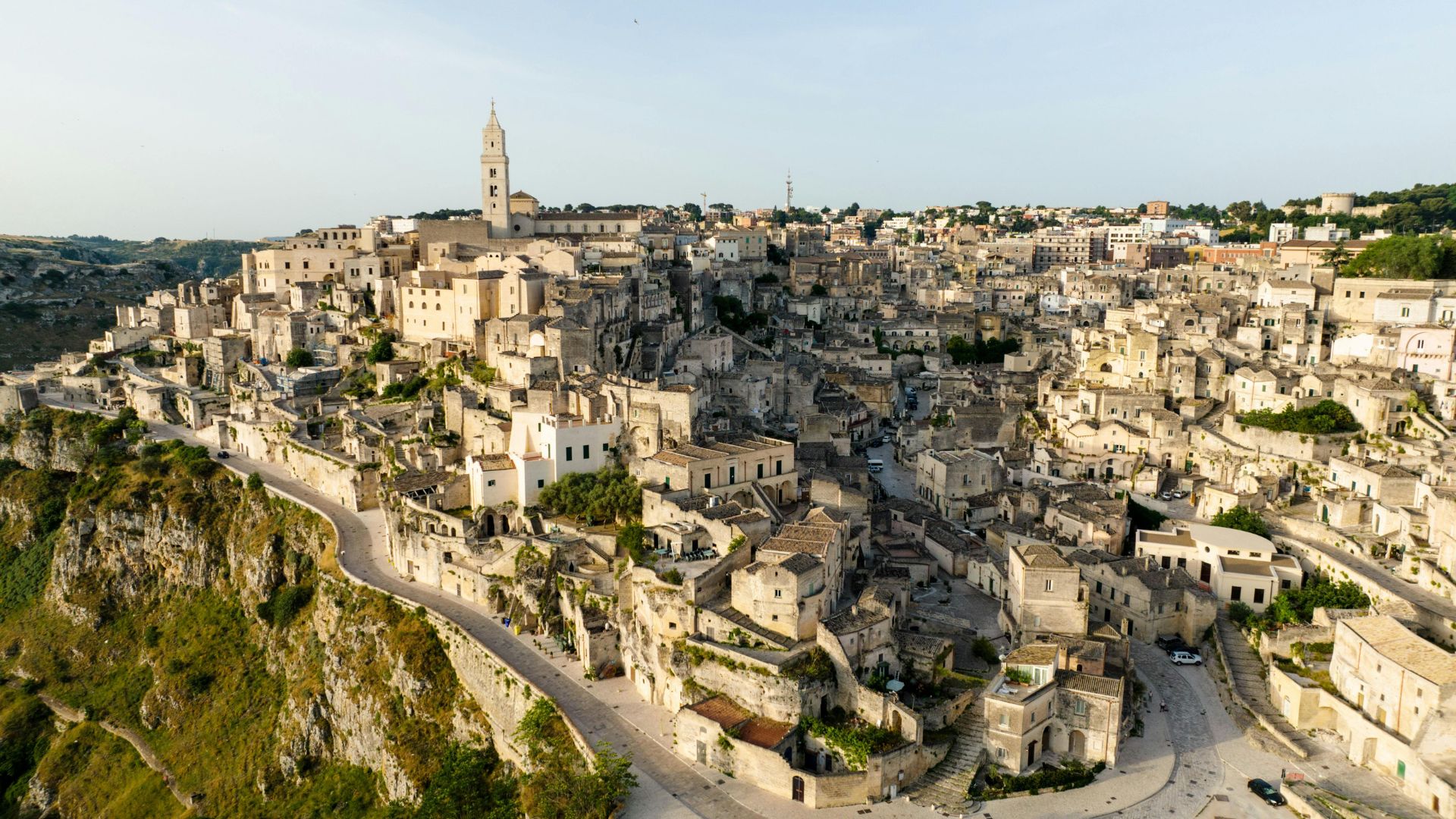
Discovering Matera’s Sassi: Ancient Caves Reimagined
The Sassi of Matera stand out as one of Italy’s wildest architectural feats. These ancient cave dwellings started as basic shelters and now draw travelers looking for something way beyond ordinary.
A History Carved in Stone
Matera’s Sassi story goes back more than 7,000 years. People have lived here longer than almost anywhere else in Italy.
For ages, families shared these caves with their animals. By the 1950s, the Sassi had gained a reputation as “Italy’s shame” because of the grinding poverty and rough living conditions.
Eventually, the Italian government stepped in and moved everyone to modern housing. The caves sat empty for decades.
Restoration work began in the 1980s. UNESCO added the Sassi to its World Heritage list in 1993.
Now, these caves host boutique hotels, restaurants, and museums. Wandering the winding alleys, you get this weird sense of time travel, but with Wi-Fi and hot showers.
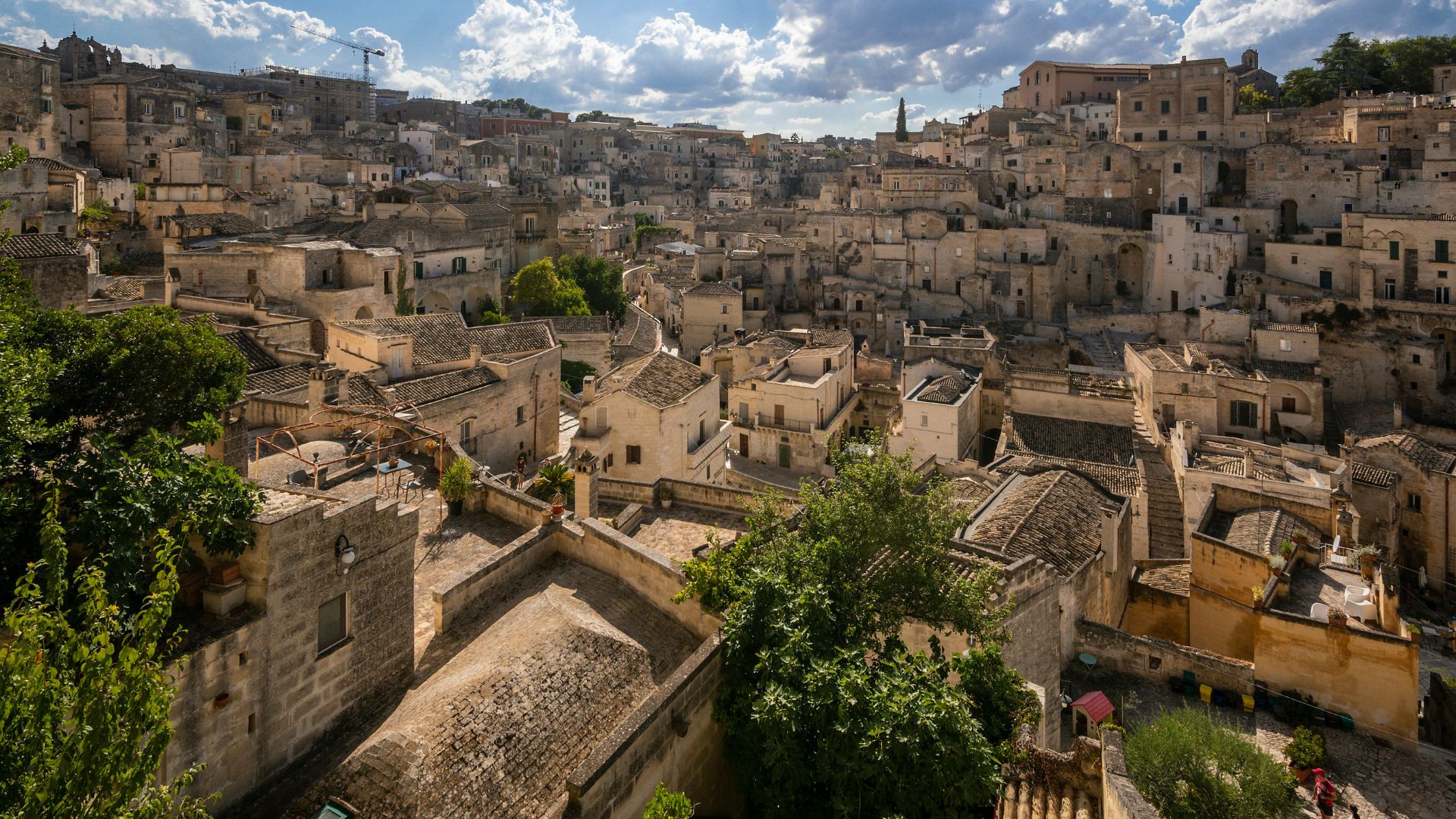
The Unique Appeal of Cave Houses
Spending a night in a Sassi cave isn’t like any other hotel stay. The limestone walls keep things cool in summer and cozy in winter, all on their own.
A lot of cave hotels keep the old bones—stone walls, arches, vaulted ceilings—but toss in modern luxuries. I’m talking rain showers, plush beds, and the occasional designer chair.
Rooms often have arched doorways and little alcoves carved right into the rock. Some even come with terraces that look out over the ravine and the jumble of the old city.
Once the sun goes down, the Sassi turn magical. Soft lights pick out the shapes of the stone city, making the whole place glow.
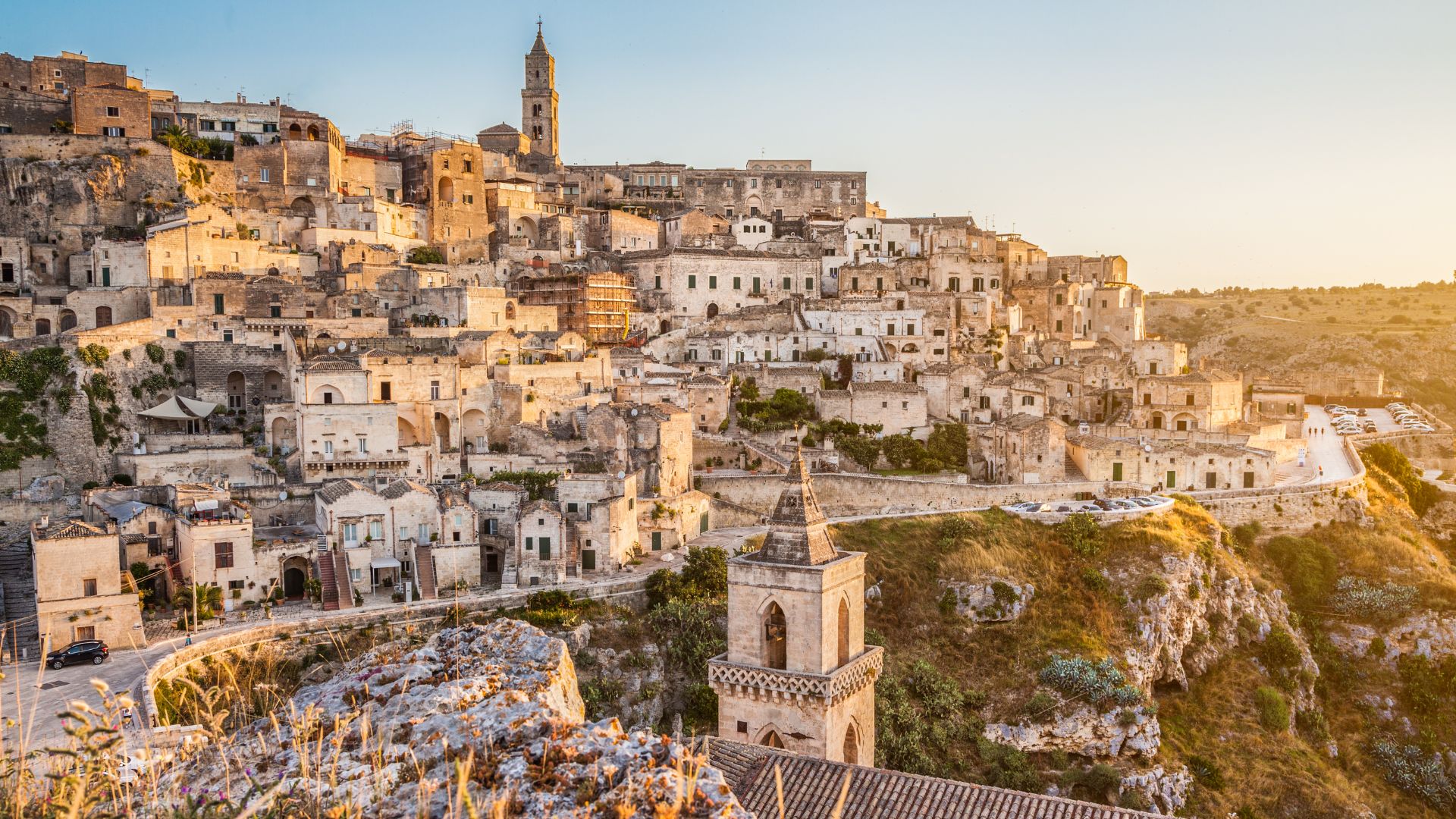
Matera’s Place in Italian Culture
Matera has shaken off its “national shame” label and become a darling of Italian tourism. In 2019, it even became the European Capital of Culture, which brought a huge spotlight to southern Italy.
Directors love Matera’s ancient look—it’s been the backdrop for films like Mel Gibson’s “The Passion of the Christ.” The city’s resemblance to Jerusalem is uncanny.
Artists, writers, and designers now flock here, inspired by the Sassi’s blend of old stone and new ideas. That mix has even started to influence Italian architecture and interiors elsewhere.
The food here echoes the resourcefulness of people who once cooked in cave kitchens with next to nothing. Simple ingredients, clever recipes, big flavors.
Matera’s comeback is a testament to Italian grit, turning struggle into beauty and keeping history alive while moving forward.
Preparing for a Night in a Sassi Cave Room
If you’re thinking about staying in a cave room in Matera’s ancient Sassi, you’ll want to prep a bit. These spots combine deep history with modern touches, making for a stay that’s hard to forget.
Choosing an Authentic Cave Accommodation
When I started searching for my Sassi stay, I found a bunch of different cave options. The “albergo diffuso” idea (scattered hotel) means some hotels have rooms spread out all over the Sassi. Some places even have 18 or more rooms built right into the rock.
I wanted the real deal, but I didn’t want to rough it. Many cave houses keep their original features but add modern comforts.
Here’s what I found:
- Luxury cave hotels: Restored caves with all the bells and whistles.
- Boutique cave B&Bs: Smaller, a bit quirky, and full of local character.
- Simple cave rooms: Bare-bones and budget-friendly.
The best places strike a balance between keeping the history and making sure you don’t freeze or sweat all night. I always checked for mentions of “restoration”—those places usually respect the cave’s story.
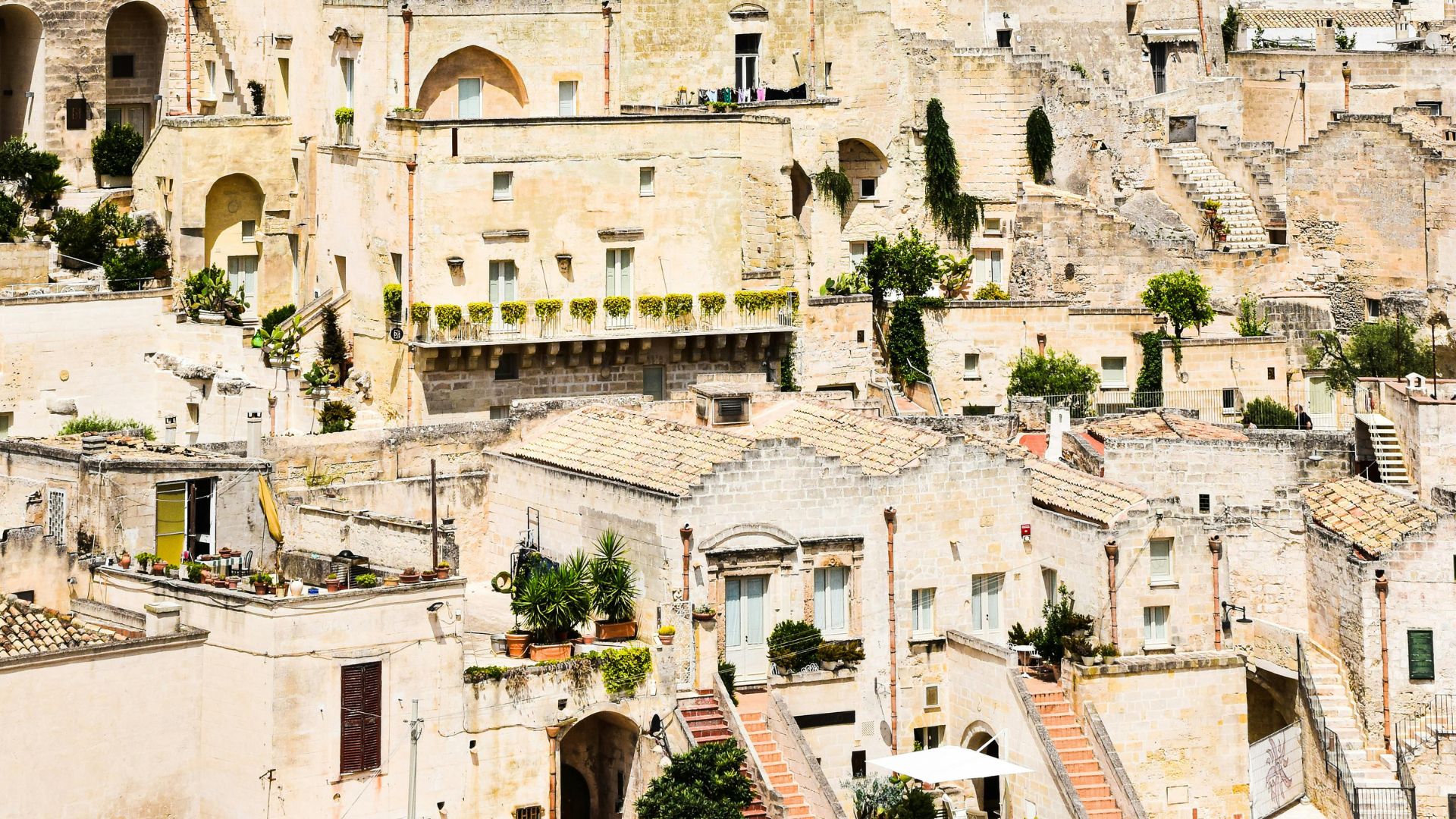
Booking Tips and What to Expect
Book early—seriously. These rooms go fast, especially from April to October. Most booking sites have English, but a few smaller spots stick to Italian.
Prices are all over the place. You might pay €70 for a basic room or over €300 for a luxury suite. I always double-checked:
- Room location: Lower caves stay cooler but might be darker.
- Amenities: Not every cave has air conditioning or the same mod cons.
- Accessibility: Some rooms mean climbing steep steps or squeezing through tight alleys.
Most places throw in breakfast, usually with local treats. Some even have restaurants serving classic Basilicata dishes.
Packing Essentials for Your Stay
Cave rooms hold a steady temperature, but they can feel a bit damp. Here’s what I packed:
- Layers: A light sweater or jacket, even in summer.
- Good walking shoes: The Sassi’s streets are steep and uneven.
- Flashlight or phone light: Some areas get dark at night.
- Power adapter: Outlets can be limited in older places.
- Earplugs: Sound bounces around inside caves.
I also grabbed a little Italian phrasebook. Most hosts speak some English or French, but knowing a few Italian basics made things a lot smoother.
Don’t bring huge bags—space is tight, and you’ll probably have to haul your stuff through winding paths to get to your room.
Inside the Cave: My Unforgettable Experience
Stepping into a cave hotel in Matera’s Sassi district felt like entering another era. The limestone walls seemed to hum with old stories, but the comforts were modern.
First Impressions and Atmosphere
Right away, I noticed the mix of rustic and refined. The limestone walls curved overhead, cool and solid, shutting out the blazing Italian sun.
Handmade wooden furniture stood out against the rough stone. My bed, with crisp white sheets, looked inviting against the earthy backdrop. The lighting was just right—soft, warm, and kind of magical.
Even though the room had been carved from rock, it didn’t feel cramped. Small alcoves held candles and local pottery, giving the space personality.
Without windows, the cave wrapped me in a peaceful, cocoon-like quiet. The silence was absolute—a rare treat these days.
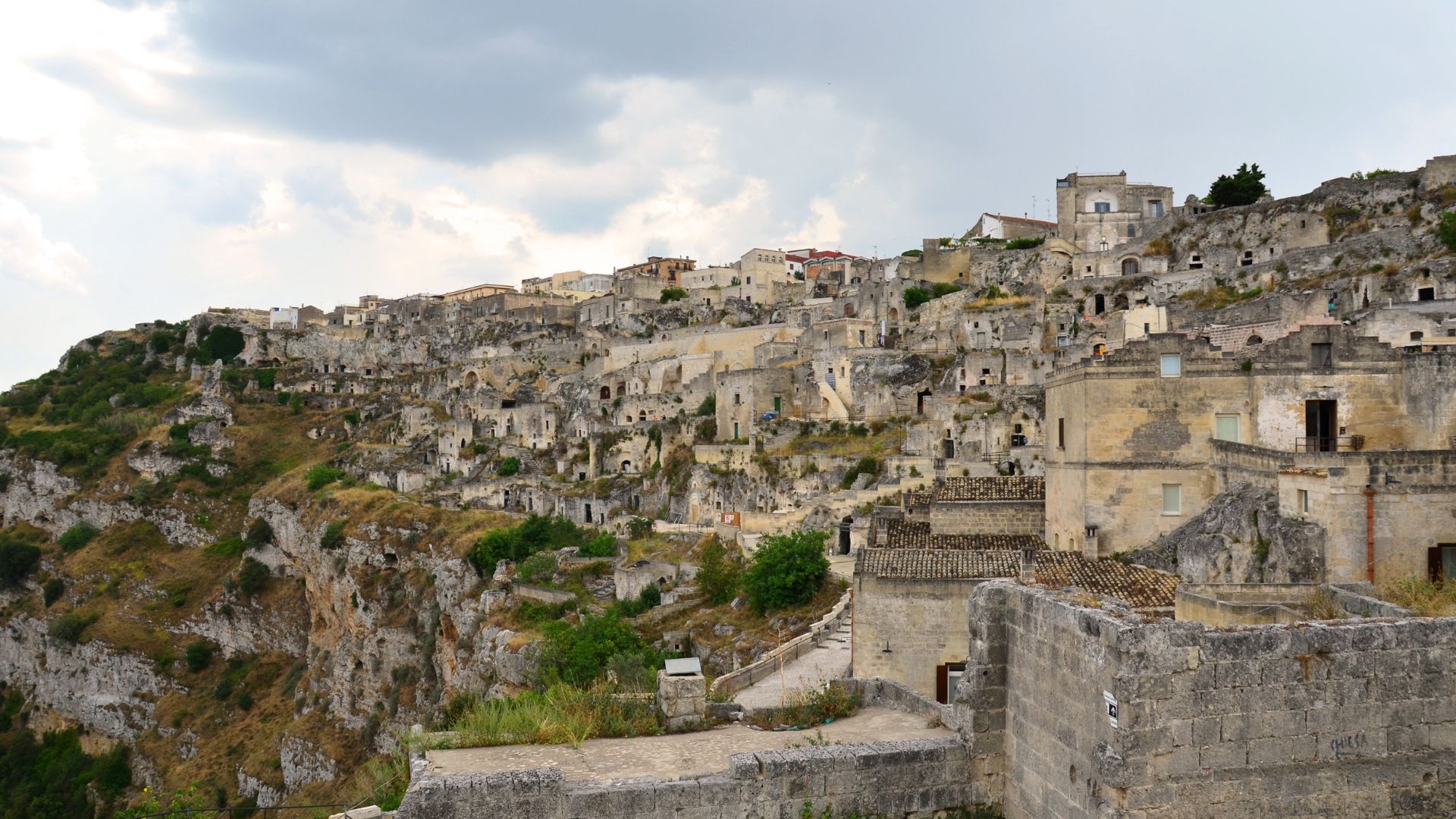
Sights, Sounds, and Sensations by Night
As dusk settled over Matera, my cave changed into a hideaway of calm. The thick stone kept out every sound, leaving just the occasional drip of water somewhere deep inside.
The temperature stayed steady—no need for air conditioning, even with the summer heat outside.
I slept deeply in the total darkness. With no windows, the cave delivered the kind of sleep I rarely get when traveling.
Before bed, I sat on the little terrace outside my door, sipping local wine. The Sassi below twinkled with lights, almost like stars scattered across the hillside.
Waking Up in Matera’s Timeless Charm
Morning in the cave felt strange—almost like time stopped. No windows meant I had no clue it was dawn until I stepped outside and saw sunlight warming the city.
Breakfast showed up at my door: fresh bread, local cheese, and strong Italian coffee. I ate among the stone walls that have sheltered people for thousands of years.
The shower surprised me. Modern plumbing, tucked into ancient rock, made for a shower I honestly didn’t want to leave.
Walking out into the daylight, I felt a bit like I’d jumped through time. The Sassi spread out before me, catching the morning sun in ways that made me reach for my camera again and again.

The Story Behind the Stones: Restoration and Modern Comfort
Matera’s sassi have gone from abandoned caves to stunning accommodations, and I can’t help but be impressed by this cultural revival. Locals have poured heart and skill into restoring these ancient homes while keeping their character.
From Abandonment to Revival
Back in the 1950s, the Italian government decided the cave homes weren’t fit for living. Families had to leave, and the Sassi sat empty and crumbling for years.
In the 1980s, Basilicata’s regional government kicked off restoration projects. I found it wild that these caves, once called the “shame of Italy,” now have UNESCO protection.
Walking around, I saw how strict rules make builders keep original details. Local craftspeople used limestone and regional wood, sticking to old-school methods.
What stood out most? The government encouraged private investors to turn these caves into boutique hotels, but always with respect for their history.

Blending Ancient Design with Modern Touches
My cave hotel room nailed the mix of rustic and luxe. The stone walls stayed exposed, making the room cool and comfortable without any fancy AC.
Designers tucked in modern amenities without messing up the vibe. I found heated floors under old stone tiles and clever lighting that made the curves of the ceiling pop.
Old wall niches now held handmade wooden furniture. The bathroom had a rainfall shower and a deep soaking tub, all while keeping the ancient feel.
The best part? The hotel kept details like worn steps and ancient beams, but added just enough modern flair. Nothing felt out of place.
Exploring Beyond the Cave: Culture, Cuisine, and Community
Sleeping in Matera’s caves is something special, but stepping outside opens up a whole world of flavors, crafts, and traditions that have grown here over thousands of years.
Matera’s Culinary Delights
The food in Matera won me over. Some restaurants are carved right into the limestone, serving up Basilicata classics that tell the region’s story.
I tried Crapiata, a hearty legume soup that’s been around forever. The rustic Pane di Matera (local bread) has a golden crust and a flavor that’s hard to beat.
For dinner, I went for handmade orecchiette pasta with rich meat ragù at a trattoria overlooking the Sassi. The owner told me these “little ears” of pasta are perfect for catching sauce.
Matera’s local wines, like Primitivo and Aglianico del Vulture, are bold and pair perfectly with the food. And if you get the chance, try Peperoni Cruschi—crispy dried peppers that pop up in all sorts of dishes.

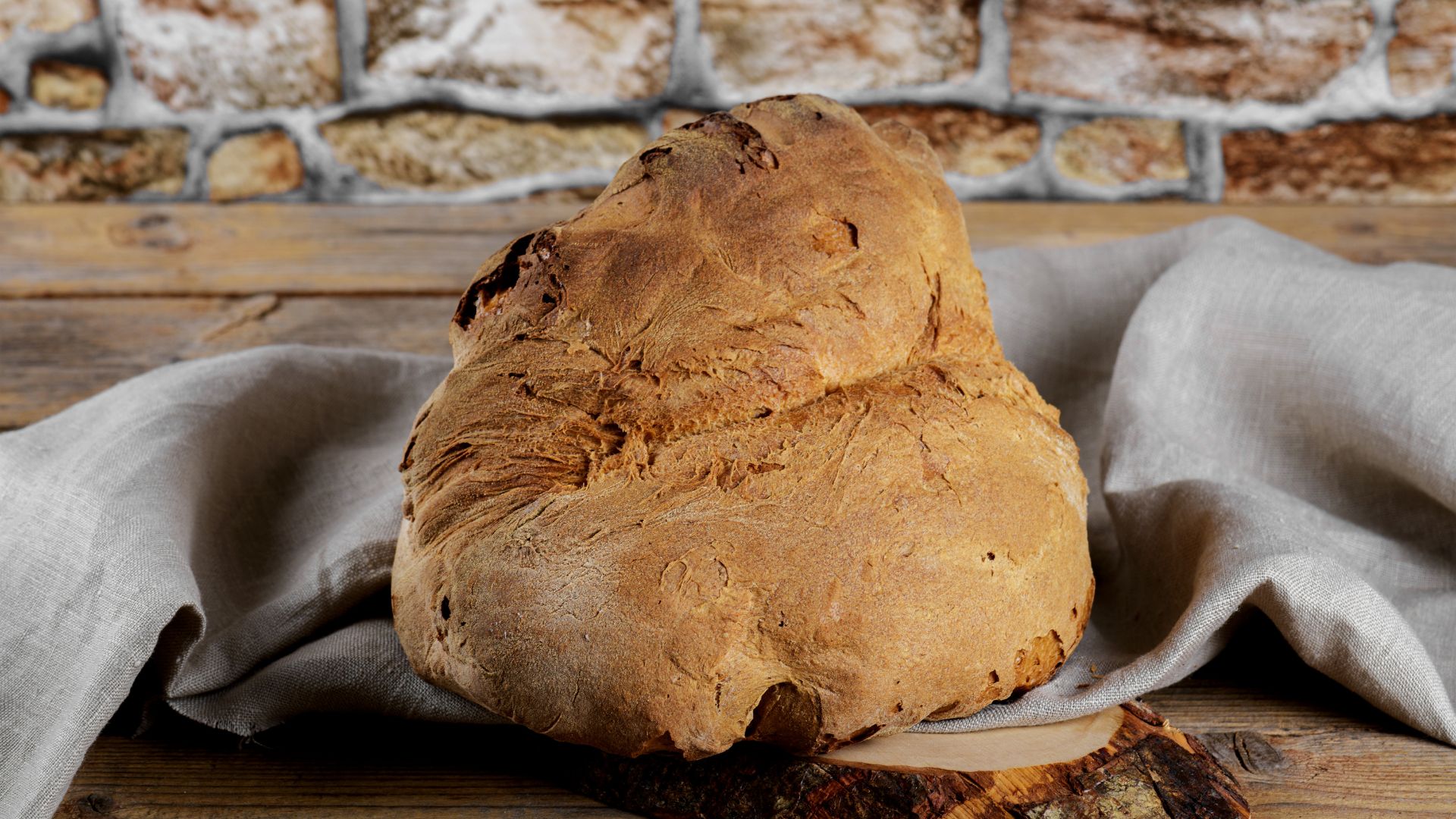
Artisan Shops and Local Craftsmanship
As I wandered through Matera’s winding streets, I stumbled upon artisans who kept ancient traditions alive. Clay workshops turn out beautiful ceramics, using techniques their families have handed down for generations.
An elderly craftsman invited me in and showed me how he shapes tufo (local limestone) into miniature Sassi houses. Watching his weathered hands work the stone with such care felt pretty special.
I found the shops selling cartapesta (papier-mâché) figures especially fascinating. This art form runs deep in southern Italy, and the detailed religious figurines say a lot about Matera’s spiritual roots.
Local textile makers weave stunning pieces, using natural dyes and old-school looms. I couldn’t resist buying a hand-embroidered table runner, decorated with patterns inspired by ancient cave paintings from the area.
Most of these shops are family-run, with skills passed down for what seems like forever. The artisans loved sharing stories about their craft and Matera’s journey from “national shame” to European Capital of Culture.

